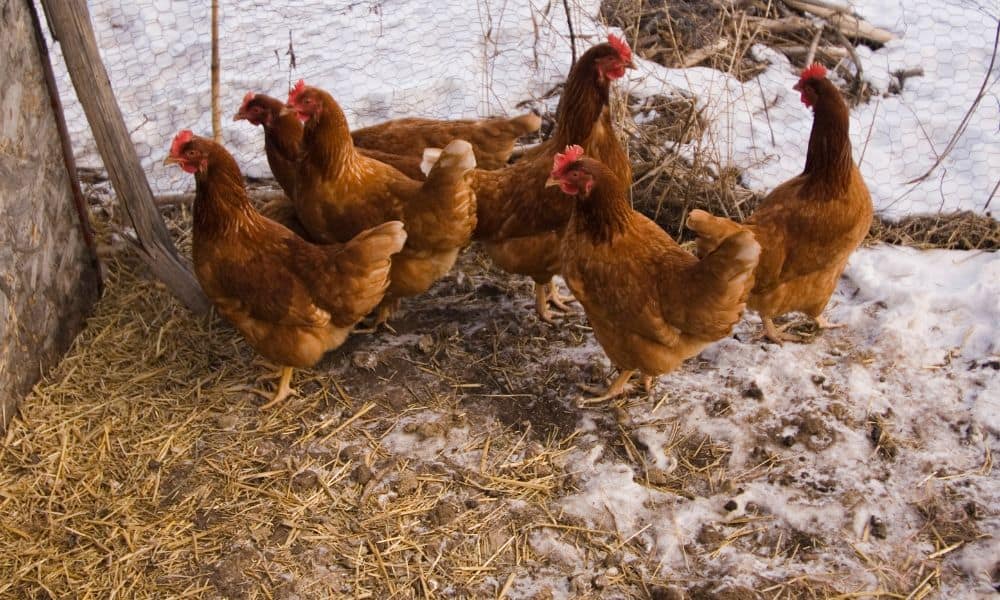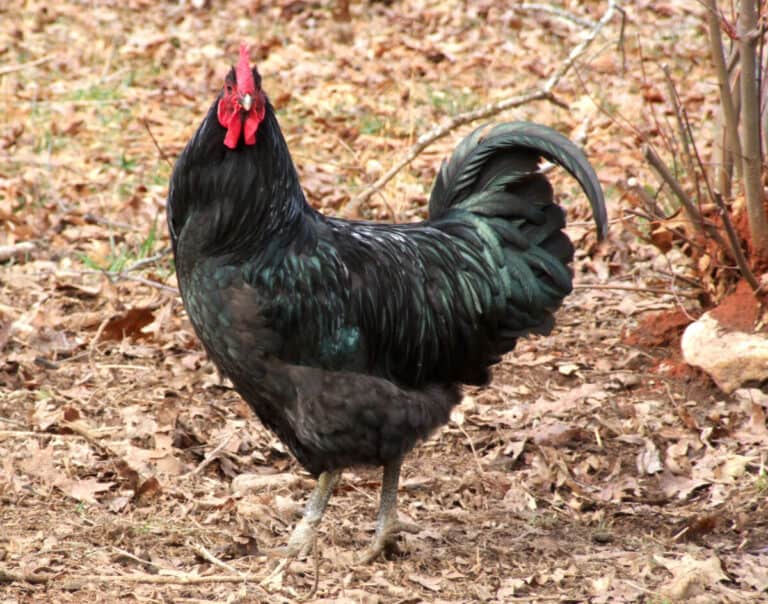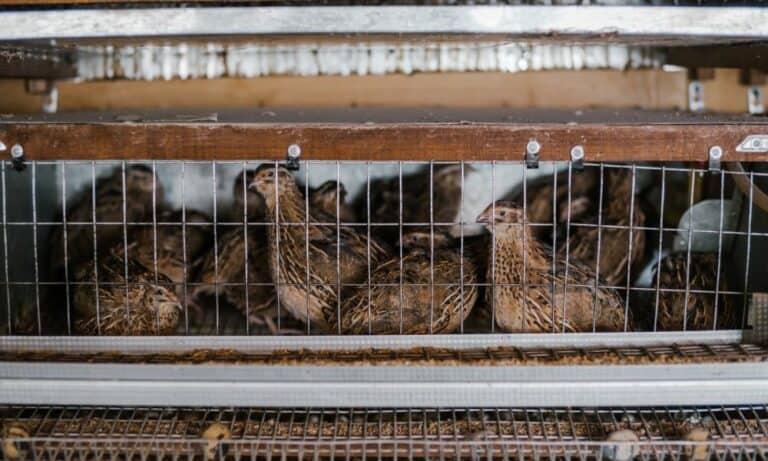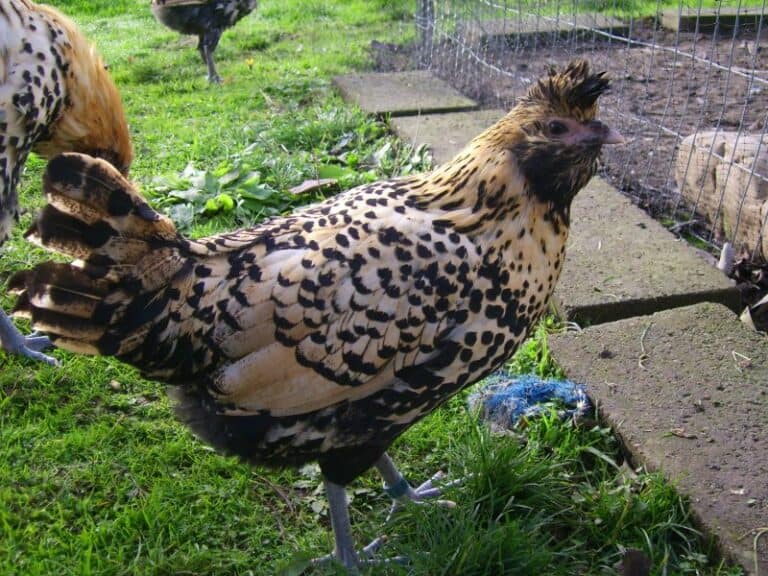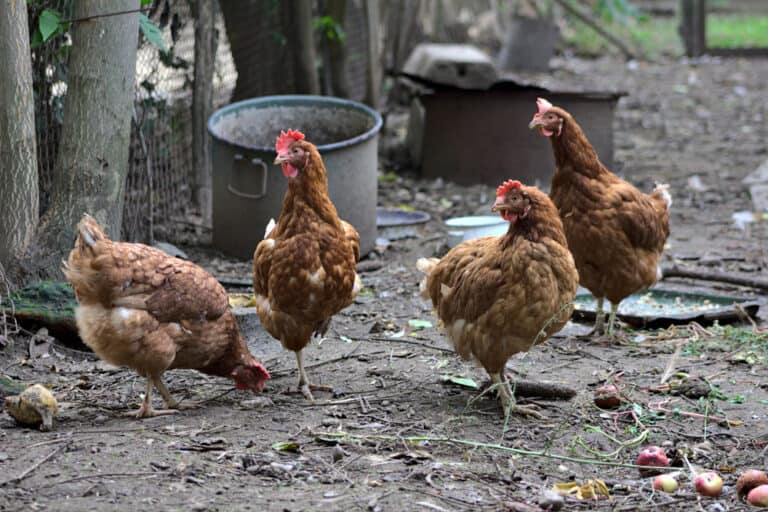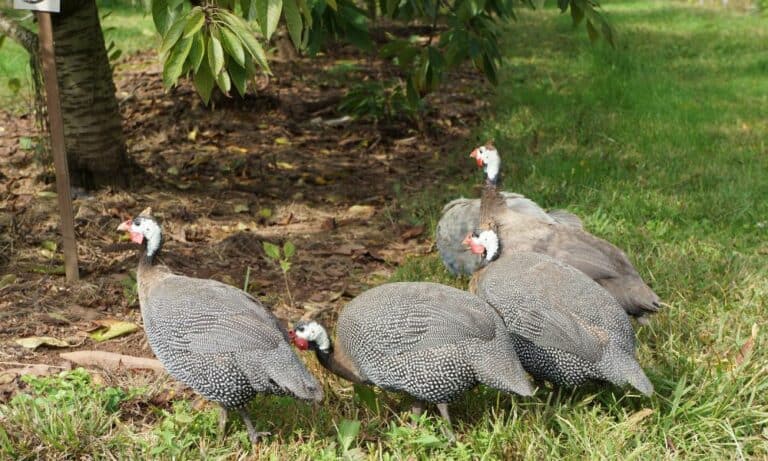Do you want to keep chickens but live in an area that gets chilly weather? Then you need a breed that can handle colder temperatures. And we’ve got you covered!
We’ll look at some key factors to keep your chooks safe and well when the mercury drops. And we’ll check out some of the best cold weather chicken breeds to suit your environment.
Ready to learn more? Let’s get started!
Tips for Cold Weather Chicken Breeds
However hardy your chickens are, there are a few things to keep in mind.
All chickens will need access to appropriate shelter. Make sure their run is shielded from the wind – wooden boards, tarpaulins or straw bales on the windward side work well. And make sure there are covered areas where they can stay dry.
Your hens will need a place where they can huddle together at night, sharing body heat. If you have just a few chooks in a larger shed, a cardboard box placed on its side will work perfectly. Half fill it with straw or wood shavings to create a cosy bedroom.
They’ll also need a continual supply of drinking water – so check yours hasn’t frozen. Bring drinkers inside overnight, and fill them with warm water in the morning. Chooks are quite happy to drink warm (but not too hot!) water.
Warm meals will also help keep them happy during the day. Many crumble or pellet feeds can be mixed with warm water. Provide just enough so that it’s all finished in half an hour, and repeat as needed. Extra corn in the afternoon will also bring extra warmth as your chooks digest it overnight.
Chickens with feathered feet are particularly prone to frostbite. Check them regularly to ensure their feet aren’t wet or dirty. Applying petroleum jelly to combs, wattles and legs will help protect those from frostbite too.
Hardiest chicken breeds
1. Australorp
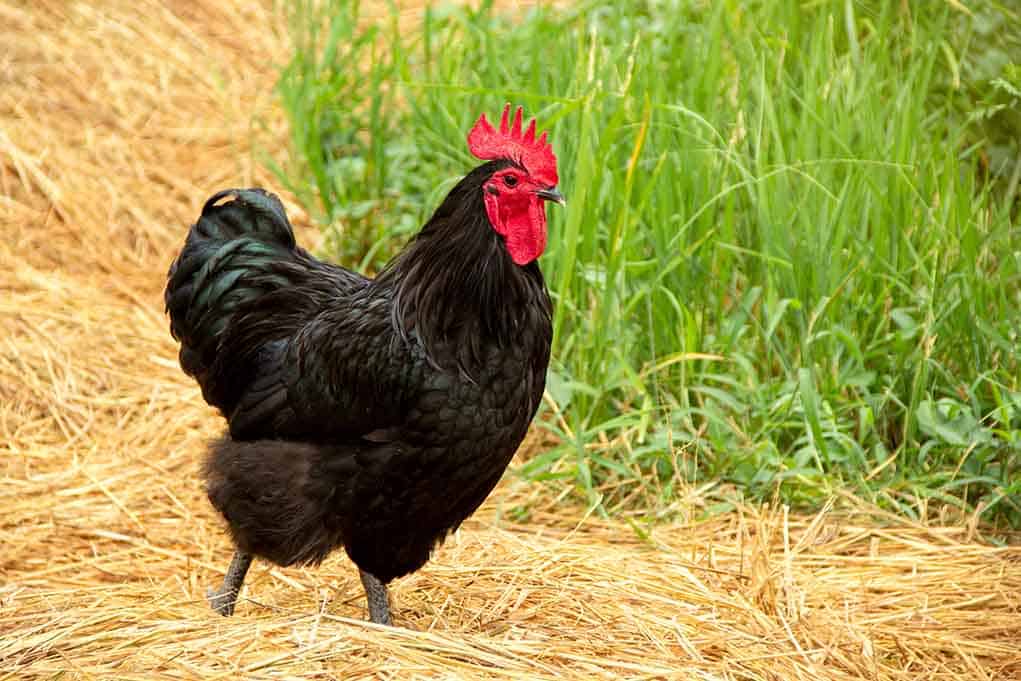
Australorps hail from Down Under. But despite Australia’s balmy climate, these are surprisingly hardy chickens. Their large build and glossy plumage help them conserve heat.
They do, however, have rather large combs. That means they’re able to stay cool in hotter weather – the comb acts like an air conditioning unit! But when the temperatures fall, a smear of petroleum jelly will help protect it from frostbite.
Male Australorps weigh between 7 and 9 pounds, while females are between 5.5 and 6.8 pounds. There’s also a bantam variety, weighing between 28 and 43 ounces.
In Australia, black, white and blue are the only recognized colors for the breed. But in South Africa, you’ll also find Australorps that are buff, golden, wheaten laced, and splash.
The hens are well known for their champion egg-laying abilities. Properly cared for chooks will lay upwards of 250 brown eggs per year. And one hen laid a record-breaking 364 eggs in 365 days.
They’re good sitters too, and will happily incubate the eggs of other breeds. And when the eggs hatch, they take excellent care of the chicks.
2. Wyandotte
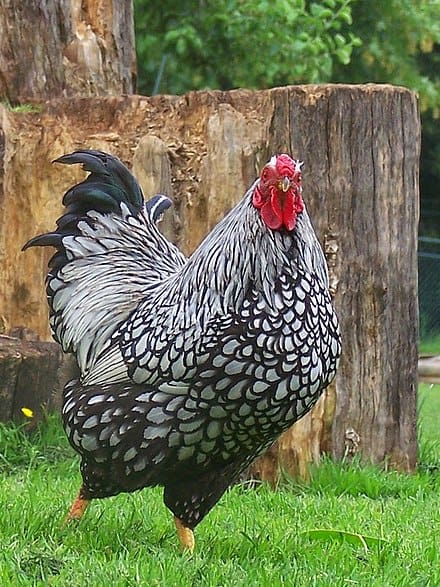
Wyandottes were first bred in Michigan and New York, two states that experience very cold winters. These chickens have thick feathers to keep them warm, and small rose combs that are resistant to frostbite.
The first Wyandottes were a variety known as silver laced, but today there’s a range of different colors. They include golden laced, black, Columbian, and partridge.
They’re large birds, another trait that helps them cope with colder weather. Adult males weigh between 8 and 9 pounds, while females are between 6 and 7 pounds. They have medium-length bodies, broad backs, and rounded breasts.
The hens generally continue to lay throughout the winter months, typically producing about 200 large eggs per year.
Wyandottes can also often be found appearing in exhibitions, and they’re particularly popular as show birds in Germany.
3. Plymouth Rock
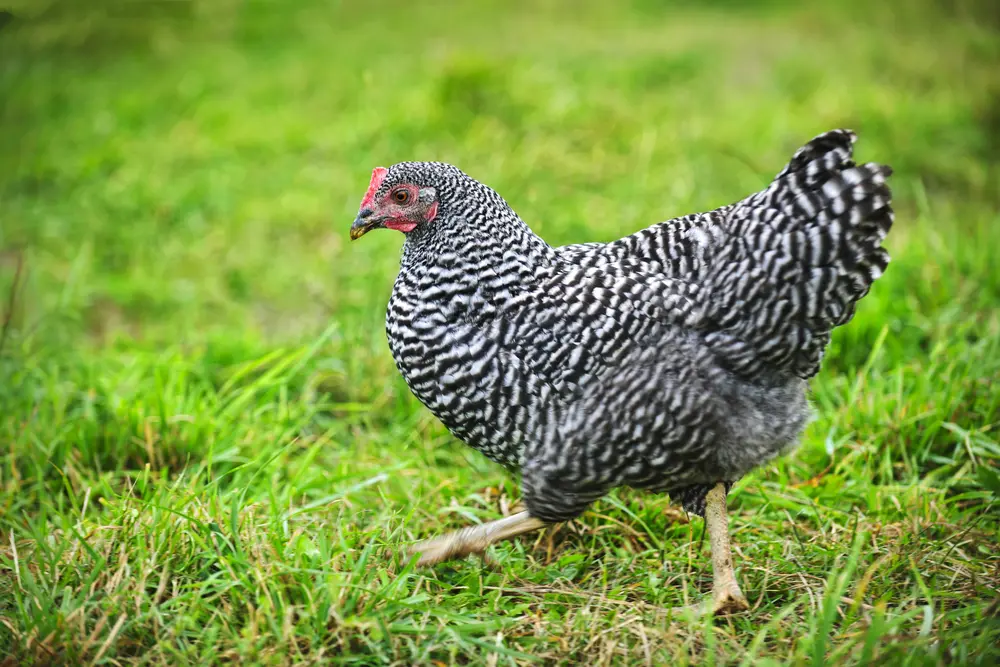
The Plymouth Rock is hardy enough to cope with cold weather, as well as being easy to manage. The hens lay about 200 large eggs per year, and they’re good sitters too. So it’s hardly surprising that this is one of the most popular chicken breeds in the USA.
Its history dates back to the nineteenth century, and it’s first recorded in a poultry exhibition in 1849. It’s thought to have resulted from cross breeding of single combed Dominiques and Java chickens. And some people believe there are Cochins in the mix too.
The original Plymouth Rocks had barred plumage, but other colors were developed over the years. These include blue, white, buff, and silver penciled.
The chicks develop a full body of feathers early on, making them resistant to the cold. The chickens have clean legs and a single comb with five points. Their combs, wattles and earlobes are all bright red, their legs are yellow, and their beaks are yellow or horn-colored.
They’re calm, friendly and curious chooks, and happy around both children and adults. Even the roosters are very seldom aggressive.
4. Rhode Island Red

The Rhode Island Red is another popular American chicken breed. It first emerged in Massachusetts late in the nineteenth century, and its distinctive red plumage is a result of its Malay heritage. The other half of its genes come from Brown Leghorn chickens from Italy.
As a northern breed, it’s very hardy. It will tolerate temperatures of 0 degrees Fahrenheit, though it’s happiest between 45 and 65 degrees.
Plumage ranges from a pink shade through to deep red, but the tails are always black. The comb may be single or rose, but is always bright red, as are the wattles and earlobes.
There’s plenty of red elsewhere on this chook too. Their eyes are red-orange, their beaks reddish brown, and sometimes there’s even red on their toes!
The hens are good layers. And while the rate of egg production will drop in colder temperatures, they’ll continue to lay throughout the winter months.
5. Chantecler
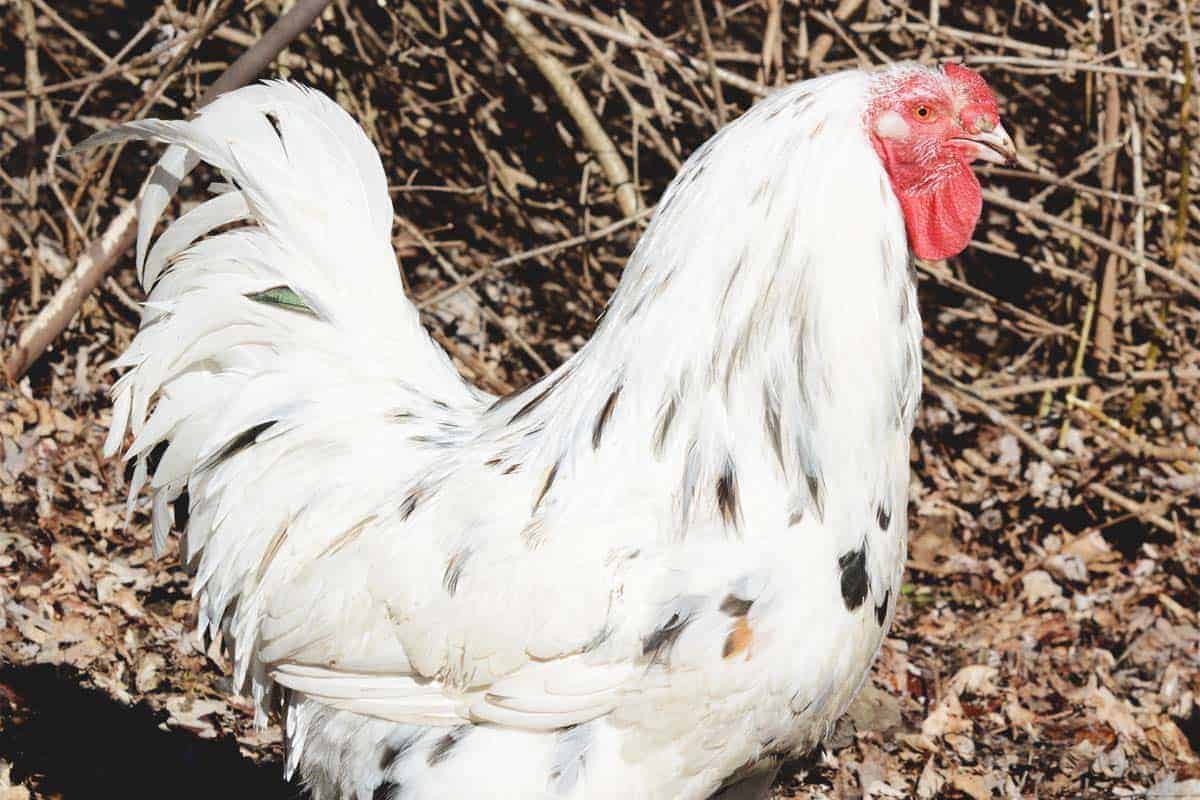
The Chantecler is a Canadian breed, so it’s no surprise that this is a chicken that’s very cold hardy.
Their heritage includes Dark Cornishes, White Leghorns, White Plymouth Rocks, White Wyandottes and Rhode Island Reds. And with a number of those breeds appearing on our list, the Chantecler’s cold resistant credentials were assured.
Their plumage lies closely against their bodies, but their feathers are also very fluffy, making them excellent at trapping warmth. Their combs and wattles are extremely small, so they don’t lose heat and aren’t prone to frostbite.
Males weigh around 9 pounds, while females are between 6.5 and 7.5 pounds. The skin of both sexes is yellow, and the hens lay eggs with brown shells.
They’re gentle birds, who can become very friendly when tame. But they do need to be allowed to roam free.
Today, this breed is relatively rare. But if you’re looking for a chicken that can withstand the cold, the Chantecler is one of the best options out there.
6. Jersey Giant
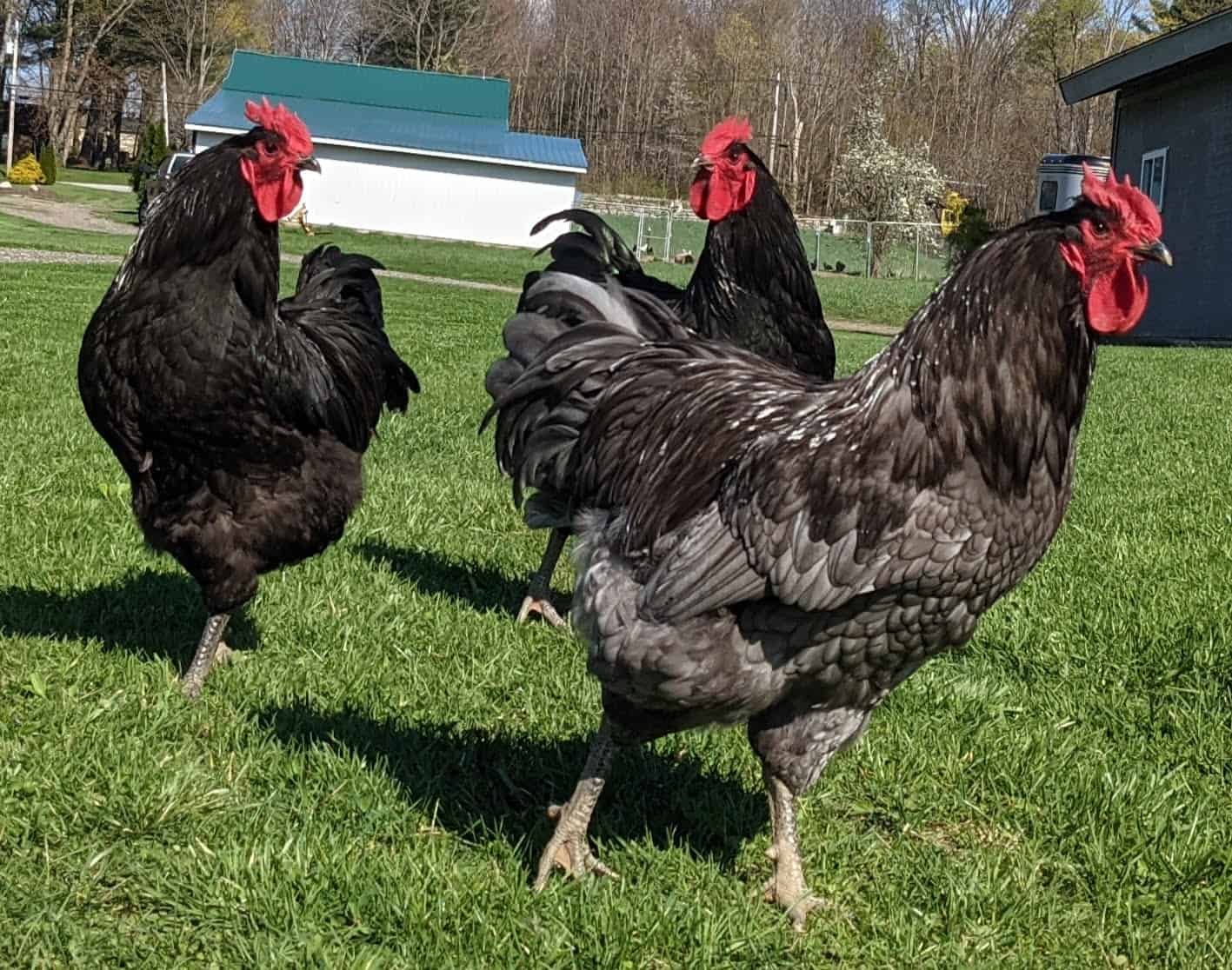
The aptly-named Jersey Giant is one of the largest breeds of chicken on the planet. And its size is one of the reasons it’s fairly resistant to the cold.
Standard males weigh an impressive 13 pounds or thereabouts, while females are about 10 pounds. There’s also a bantam variety, with males weighing 38 ounces and females 34 ounces.
The breed was developed early in the twentieth century. The first Jersey Giants were black, and these are still the largest birds, weighing an average of a pound more than the white. (There’s also a blue variety.)
These are calm and gentle chooks, and even roosters rarely become aggressive. Their sheer size, though, means that they may be a little intimidating to smaller children.
The hens are decent egg layers. Like many cold hardy breeds, they’ll continue laying in winter. And they can also go broody, a useful trait if you’re hoping to breed from your chooks.
One thing to bear in mind, though, is that it takes a lot of time – and food! – for Jersey Giants to reach their full size. So that does mean you’ll have a larger feed bill than with most other breeds.
7. Dominique
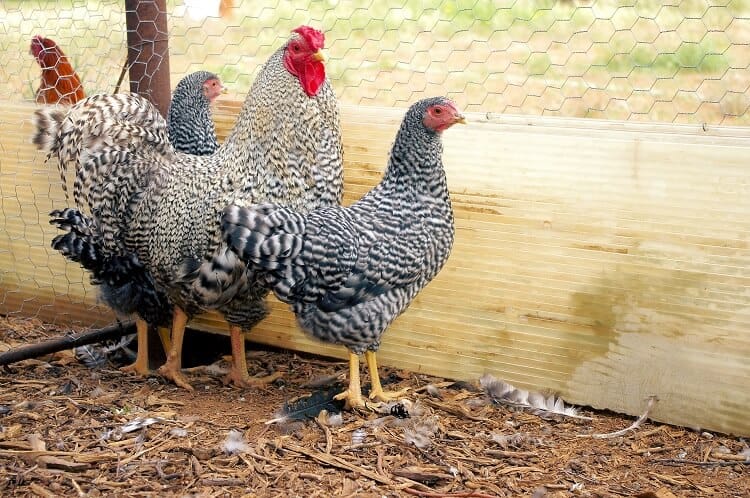
The Dominique is believed to be the oldest of all American chicken breeds. And its loose, dense feathering and small comb means it’s pretty resistant to cold temperatures.
It’s thought to have been bred from chickens brought to the US from southern England in the eighteenth century. And it’s one of the breeds that contributed to the development of another popular chicken, the Plymouth Rock.
Adult Dominiques usually weigh between 5 and 7 pounds. They have what’s known as “cuckoo” plumage, an even pattern of darker and lighter feathers. Their earlobes and wattles are red, while their legs and beaks are yellow.
While the rose comb of Dominiques is resistant to frostbite, their wattles can be more vulnerable. Smearing petroleum jelly over them in cold weather will help prevent that problem.
The hens are good layers, generally starting laying between 21 and 24 weeks of age. They’ll produce between 230 and 275 small to medium-sized eggs in a year.
8. Cochin
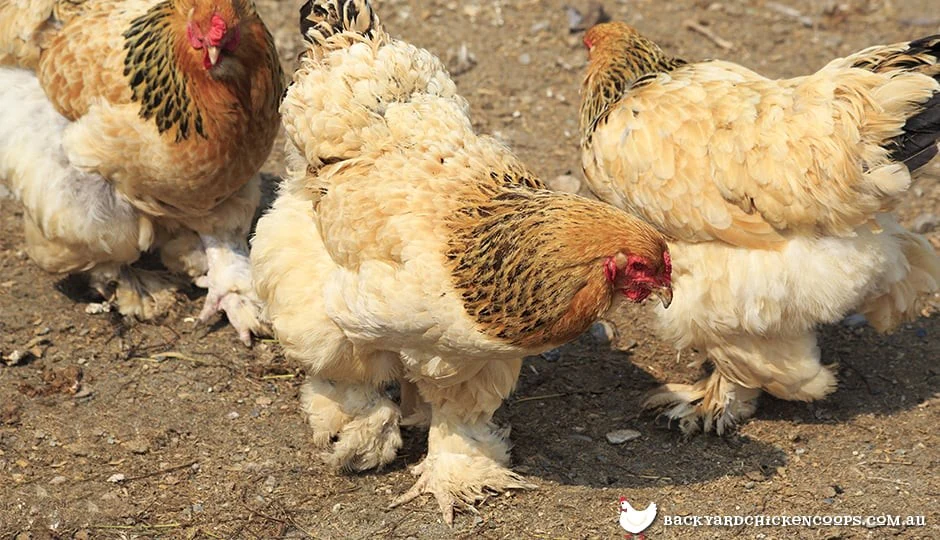
Cochins have heavy feathers all over their body, even down to the toes. That makes them very cold hardy. But it does also mean it’s important for their legs and feet to stay dry. Water or mud on the feathers there can all too quickly lead to frostbite.
Cochins were bred from Chinese birds imported to the US and Europe in the mid nineteenth century. Today, there are both standard and bantam Cochins, and a wide range of color varieties.
The American Poultry Association recognizes nine colors for standard Cochins and 13 for bantams. And there are frizzled bantams too – chickens whose feathers curl outwards from their bodies.
Standard adult males weigh between 8 and 13 pounds, while females are between 7 and 11 pounds. Bantam males are about 2 pounds, while females are around 3.5 ounces lighter.
These days, Cochins are most usually kept as exhibition birds. But the hens also lay plenty of large eggs, including through the winter months. They’re good sitters, who’ll hatch turkey and duck eggs as well as their own. And they take good care of their young.
9. Brahma
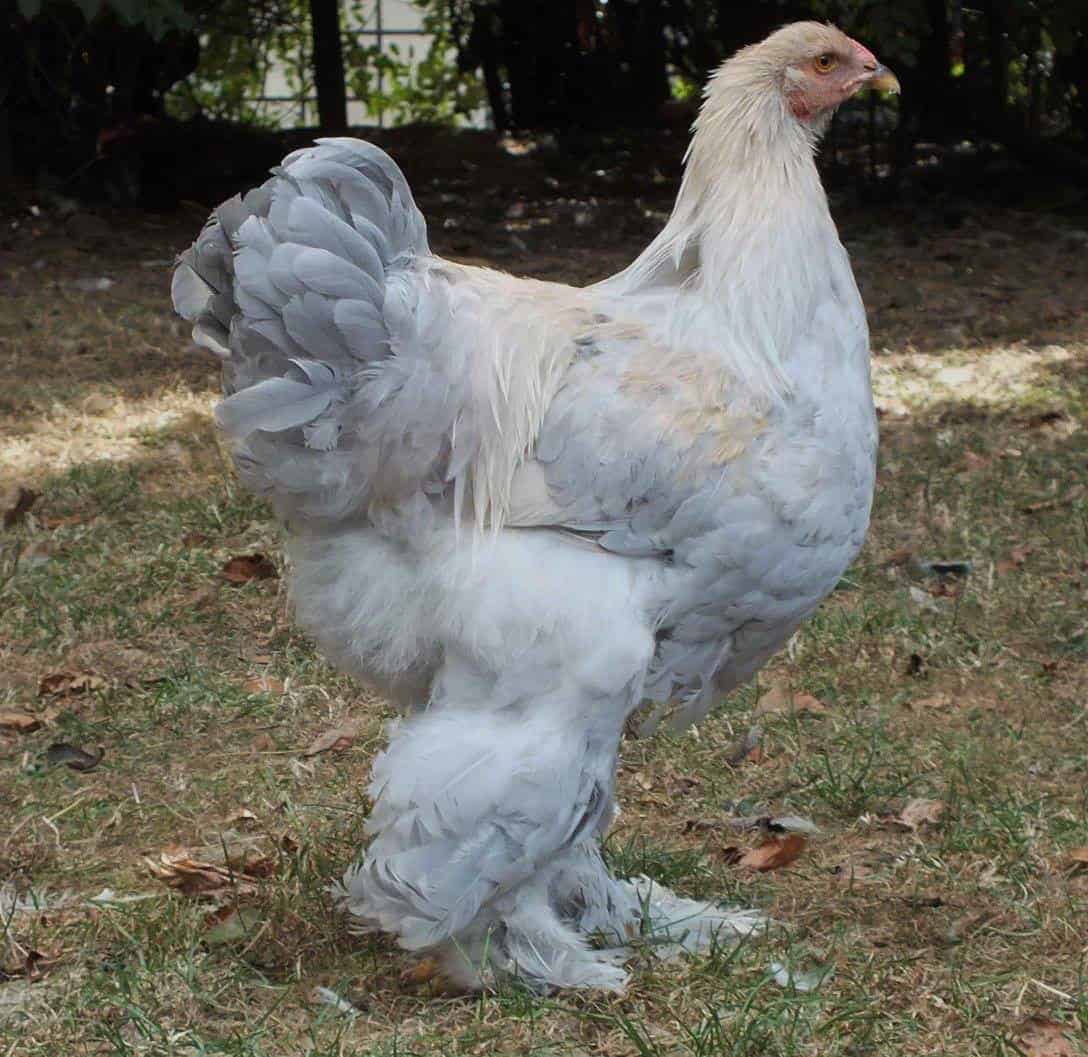
The Brahma chicken is another breed that’s believed to have been developed in the US from Chinese birds. In that respect, it’s similar to Cochins. But you can tell them apart by the Brahma’s distinctive head shape and pea comb.
That pea comb is part of the reason Brahmas are quite hardy birds. Its small size means it’s resistant to frostbite and doesn’t transmit heat from the chicken’s body.
Both sexes have feathered legs, which is a mixed blessing in inclement weather. While dry feathers help keep the chickens warm, they have the opposite effect if they get wet. And wet or muddy feathers can leave chooks’ legs vulnerable to frostbite.
Cocks weigh about 12 pounds, while hens are generally about 2 pounds lighter. The American Poultry Association recognizes three different color varieties: dark, light and buff. In Australia, breeders also recognize crele, barred, partridge, blue, and black varieties.
This is another breed where the hens will continue to lay over winter. They produce brown-shelled eggs which each weigh about 2 ounces.
10. Sussex
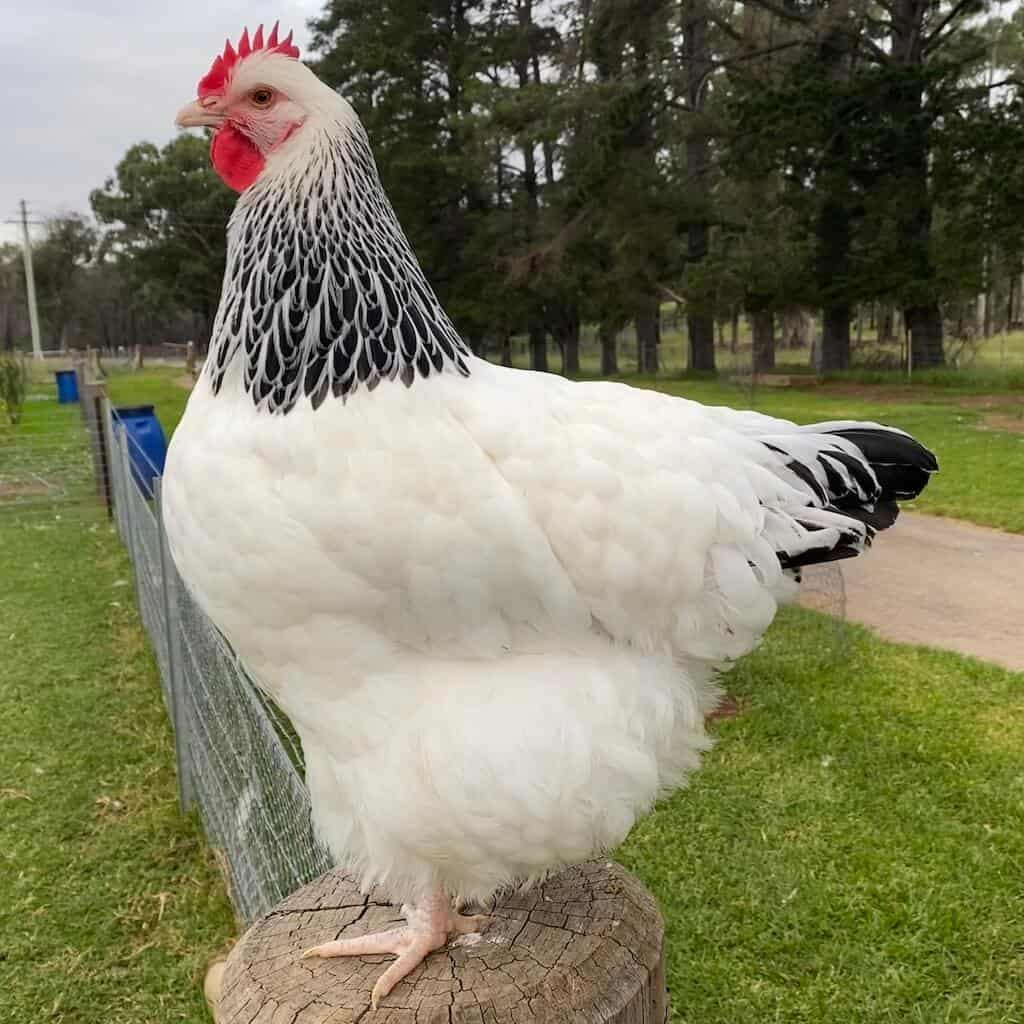
The handsome Sussex chicken originated in the English county of the same name. The first breed association in its honor was formed in 1903.
They’re relatively large birds, with the cocks weighing at least 9 pounds and hens at least 7 pounds. Their mass helps them conserve heat, as does their dense feathering.
The first Sussexes were a speckled color. These were quickly joined by light and red varieties, and later by white, buff and silver.
They’re graceful chickens, with long, flat backs, wide shoulders, and tall tails. They have a single comb, and while their eye color varies, all Sussexes have white legs and skin, and red combs and wattles.
The hens aren’t usually prolific layers, producing between 180 and 200 eggs per year. But some strains have focused on egg production, and those chickens can lay around 250 eggs per year.
Baby, it’s cold outside!
That brings us to the end of our look at some of the best cold weather chicken breeds out there. We hope you’ve enjoyed learning more about these hardy chooks.
Just remember, however healthy and tough your chickens are, they’ll still need shelter. Warm food and water will help keep them happy and cosy. And with any luck, you may even get some winter eggs in return!

